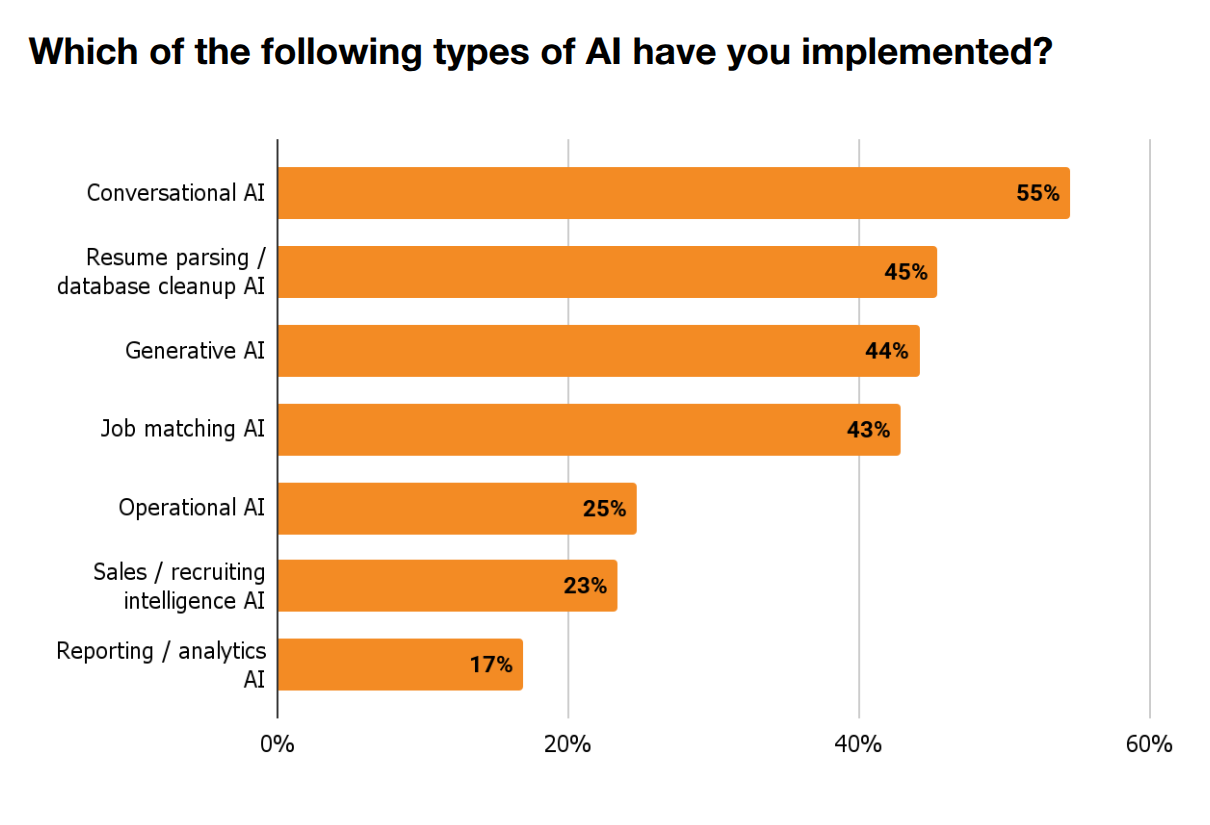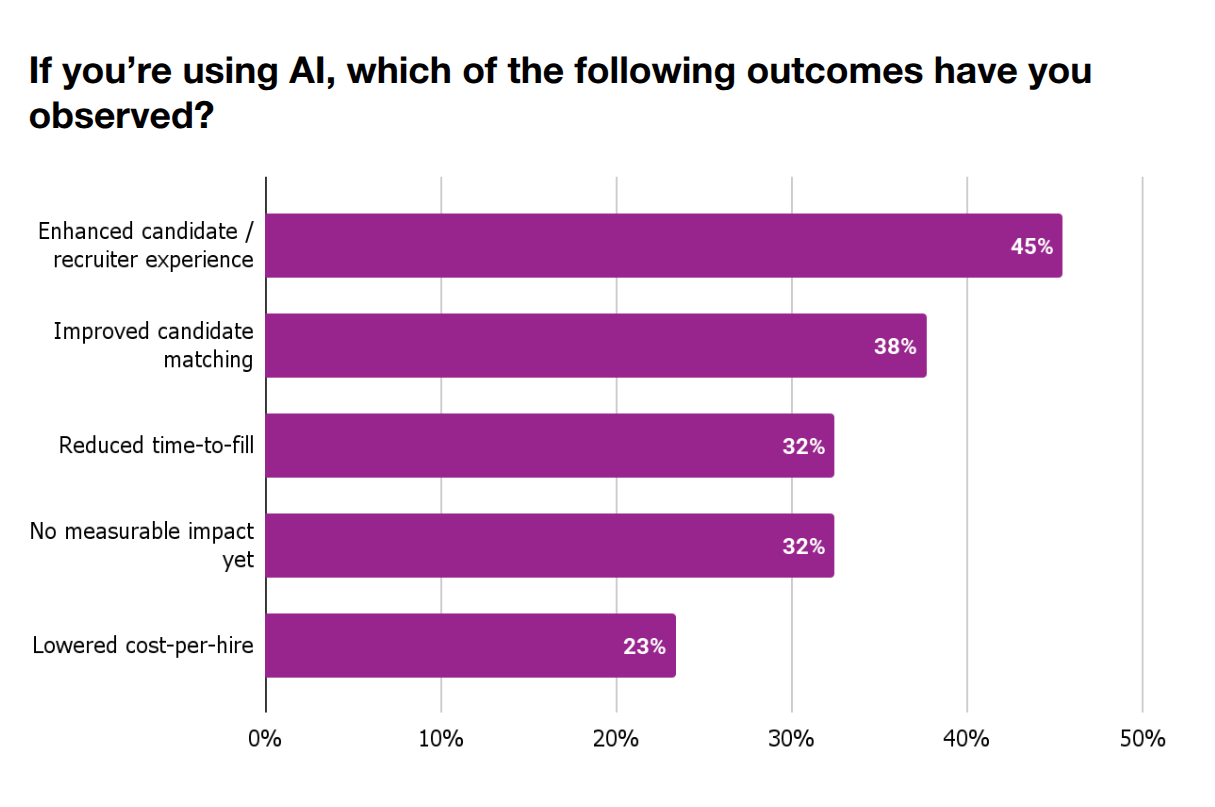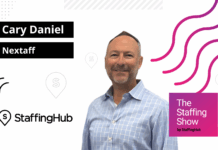
Key takeaways:
- Rapid AI adoption: 61% of staffing firms already use AI (up from 48% in 2024), with 74% of non-users planning adoption — potentially reaching 75% industry-wide by year-end.
- Conversational AI dominates: 55% of AI users deploy conversational AI for candidate communication, followed by database cleanup (45%) and job matching (43%) applications.
- Measurable results: 45% of AI users report enhanced candidate/recruiter experiences and 38% see improved matching, though strategic implementation matters — 32% haven’t seen measurable impact yet.
The AI revolution has arrived in staffing, and agencies that aren’t adapting risk being left behind. According to the 2025 State of Staffing report, 61% of staffing firms already use AI for business applications — a dramatic jump from just 48% in 2024. With 74% of non-AI users planning to adopt the technology this year, we could see three-quarters of all staffing agencies using AI by year-end.
But the real question isn’t whether to adopt AI — it’s how to use it strategically.
Conversational AI leads the pack
Among agencies already using AI, conversational AI dominates at 55%, making it the most popular application in staffing. This technology is transforming how agencies handle candidate communication, allowing for 24/7 engagement and instant responses to common queries.

Following closely behind are resume parsing and database cleanup AI (45%), which helps agencies maintain cleaner, more searchable candidate databases. Generative AI (44%) and job matching AI (43%) round out the top applications, showing how firms are using AI across the entire recruitment lifecycle.
Strategic implementation matters
The most successful agencies aren’t just throwing AI at every problem — they’re being strategic about where it adds the most value. For agencies planning to adopt AI in 2025, the top priorities are clear:
- Candidate communication (51%): Automating initial outreach, follow-ups, and routine inquiries
- Candidate/client matching (51%): Improving the accuracy and speed of job-candidate pairing
- Candidate qualification (46%): Streamlining the initial screening process
- Sales outreach (46%): Enhancing business development efforts

Measuring real impact
The results speak for themselves. Among current AI users, 45% report enhanced candidate and recruiter experiences, while 38% see improved candidate matching. Perhaps most importantly, 32% have achieved reduced time-to-fill — a metric that directly impacts both client satisfaction and agency profitability.

However, it’s worth noting that 32% of AI users haven’t yet seen measurable impact, highlighting the importance of strategic implementation over rushed adoption.
Automation beyond AI
Smart agencies are also leveraging broader automation trends. The most commonly automated processes include background checks (70%), candidate communication (68%), and onboarding (61%). Looking ahead to 2025, agencies are prioritizing interview scheduling automation (35%) and prescreening interviews (28%).
Fast-growth agencies are particularly aggressive about automation, with about one in three planning to automate reference checks, reputation management, assessments, and compliance processes.
The data shows that agencies still focused on traditional methods are falling behind. While the industry average for AI adoption sits at 61%, fast-growth agencies are leading the charge with even higher adoption rates and more strategic implementation.
Ready to join the AI-powered future of staffing? Download the complete 2025 State of Staffing report to discover detailed benchmarks, implementation strategies, and insights from industry professionals who are already seeing results.





